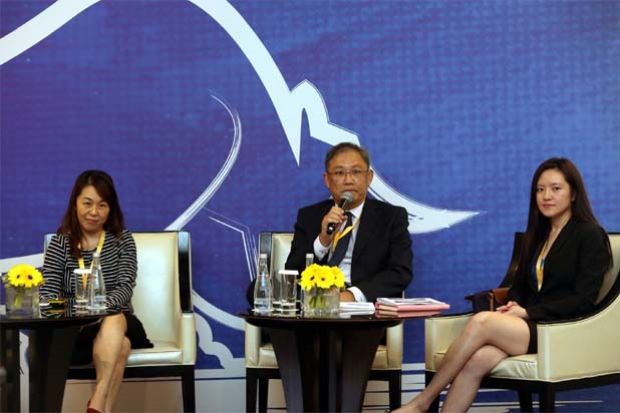Today’s smartphones can now show people what apps they use most frequently, how much time they spend on them and remind them to take a break. Moreover some mobile applications can have different settings for use by adults and children and limit applications and games by age, because many children use their parents’ phones.
“Nowadays people spend more and more time on their phones. It can be up four to five hours a day for city people. People in the phone industry can even spend longer than that. This is change from even just a few years ago. Many people, both adults and the young, spend less time outdoors being active. Give a phone to a child and they can spend the whole day on it, and this can be a problem, “ said Johansson Zhang, a senior marketing manager for the Huawei Consumer Business Group.
Now smartphone companies are addressing the issue by using technology to try and add a little more balance to the lives of handphone users. They are doing this by incorporating software in phones that monitor screen time and app usage to show users exactly how much time is spent staring at their phone screens.
“The issue of excessive time spent on phones is a concern for Huawei. We want to bring about change to make phones betters but at the same time let people, especially children, lead more balanced lives. Phones are far more than toys, they are important tools and people should know if they are spending too much time on them,” added Zhang .
As technology advances and Myanmar’s communications infrastructure improves rapidly, people are using more smartphones and spending more time on digital screens consuming services and content.
“Our statistics show people in Myanmar spend a lot of time screening digital content as they are now able to conveniently access content and pay for it,” said Allen Gilstrap, CEO of Ongo, a digital payment network.
“The Myanmar government looks to be fully committed to further liberalise the market and aims to tackle the remaining obstacles progressively. By 2020, it targets to achieve that more than 90pc of the population will have telephone access, more than 85pc internet access and more than 50pc high-speed internet access,” Mr Gilstrap said.
“Nowadays, people in Myanmar are able to choose between four telecommunication operators – MPT, Telenor, Ooredoo and My Tel for services. In this digital age, digital literacy and security become more essential in daily life of people.
Digital literacy is growing in Myanmar even as people are using smartphones everywhere, to browse or watch videos or message friends. It is the national progression, people to begin more convenience digital payment for not only online purchases but in-store purchases as well,” Gilstrap added.
Amara Communication Co Ltd CEO Alan Sinfield advises that Myanmar people should work with companies to invest in security and technology.
“We want to help them convert retail outlets to online payment mechanisms. This is all part of digital ecosystem. The more people embrace using electronic payments, the better it will be for the convenience of businesses and consumers,” said Mr Sinfield.
On December 11, KBZ Bank also introduced KBZPay, a digital wallet or purse that is stored in an app on the mobile phone. Aside from being able to store money, the KBZPay app allows customers to make cashless transactions, to send and receive money, and to withdraw physical cash through authorised agents.
Companies like Ongo, Wave Money, True Money, Ok Dollar, and Reddot, are helping to move Myanmar towards digital payments with their services.
“Digital payment in Myanmar is growing rapidly among businesses and consumers. 35 million people have smartphones and this is very empowering. Consumers are smart, when they see something more convenient, they adopt it,” said Mr Gilstrap.
Scion Industrial Engineering providing all king of industrial engineering spare parts in Myanmar.
Source:https://www.mmtimes.com/news/digital-landscape-rapidly-changing.html


